Introducing Creekside Center, a new home for UC Berkeley’s Disabled Students’ Program
Dwinelle Annex was rehabbed to create a long-awaited "one-stop shop" for DSP, which serves about 5,500 students on campus.
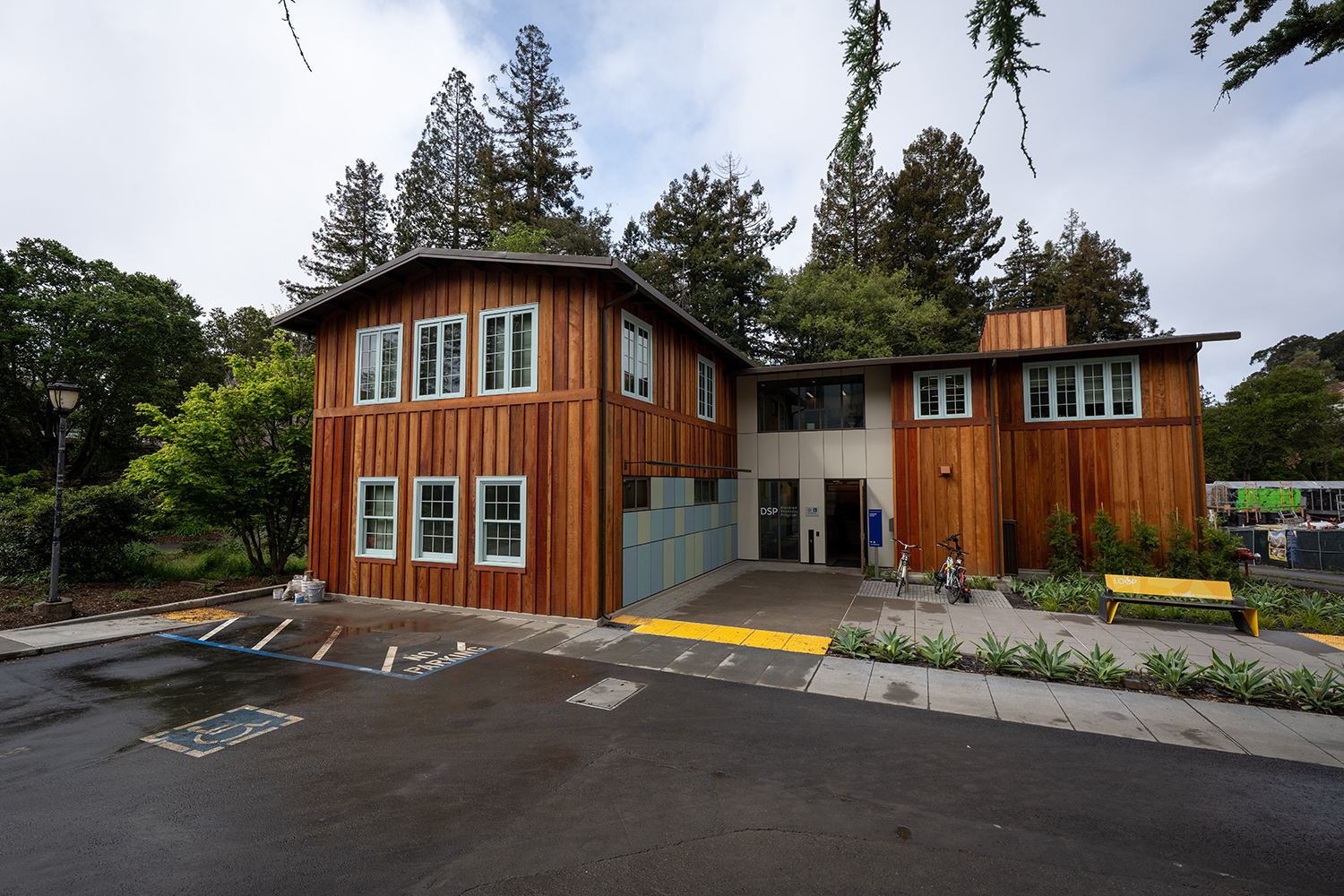
Keegan Houser/UC Berkeley
April 8, 2025
At long last, UC Berkeley’s Disabled Students’ Program (DSP) has a home: Creekside Center, an office and meeting space created especially for the DSP community. Formerly Dwinelle Annex, it’s the result of a thoughtful rehabilitation of a two-story wood frame structure designed by campus architect John Galen Howard and built in 1920. Additional sections were added in the 1940s and ’50s.
The DSP launched in 1970 with a U.S. Department of Education grant, and its first office was behind Top Dog on Durant Avenue. During the past 55 years, the program has grown significantly, securing extra space along the way — in the Cesar Chavez Building, Wheeler and Slottman halls, the Hearst Field Annex, University Hall and the Martin Luther King Jr. Building.
“Now, for the most part, we will all be in one place,” said Carmen Varela, DSP executive director. “The majority of services will be centralized and will reduce the need for students to navigate across campus. We’ll be similar to a one-stop shop.”
The newly-opened building includes offices for 15 disability specialists to meet with students, areas where students can connect with each other, a conference room, and a suite for a communications team that provides services such as note-taking, real-time captioning and accessible media.
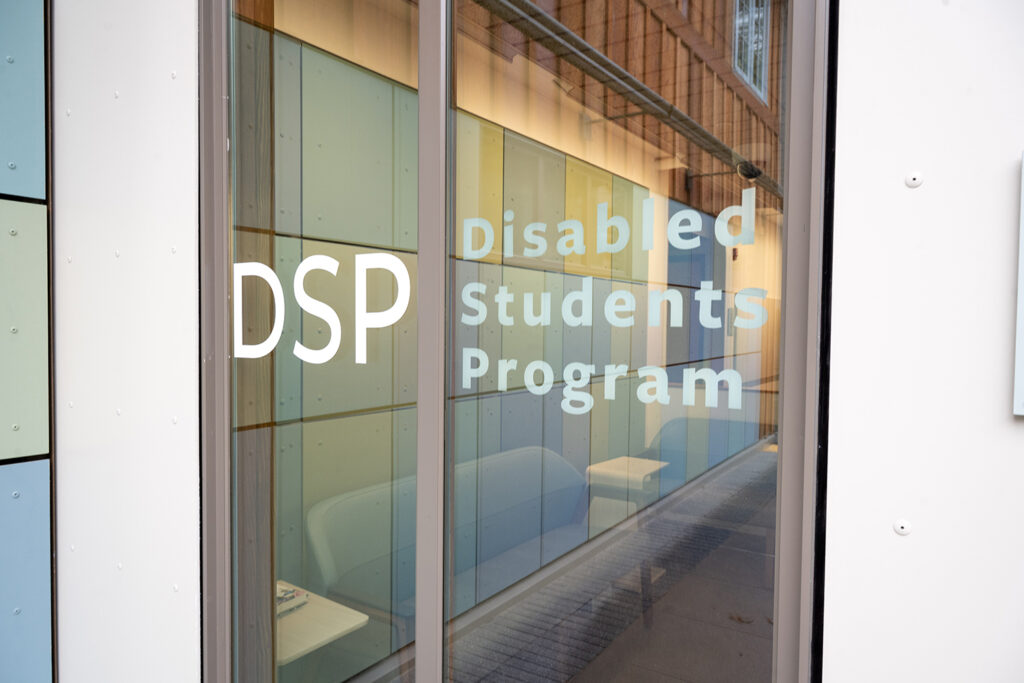
Keegan Houser/UC Berkeley
Proctored exams will continue to be held in the MLK Building, and the Disability Cultural Community Center will remain in the Hearst Field Annex.
The renovation was led by Leddy Maytum Stacy Architects (LMS Architects), a firm known nationally for sustainable design, historic preservation and universal accessibility. The light-filled center has a gross square footage of 8,800 square feet and also features an entry plaza with clear pathways, upgraded signage for improved wayfinding, an interior ramp lined by wooden railings and the building’s first elevator.
An 18-month-long project, Creekside Center “is a testament to how the campus values and views our students with disabilities,” said Varela. It also honors the legacy of student and community activism that began in the 1960s and led Berkeley to become one of the first universities in the U.S. to accommodate students with disabilities.
Berkeley’s student body funded the new center through the Berkeley Life Safety Fee, part of the University Fee Reserves. All students pay this fee to support critical seismic and safety improvements in student-serving facilities. The project budget for Creekside Center was approximately $16 million.
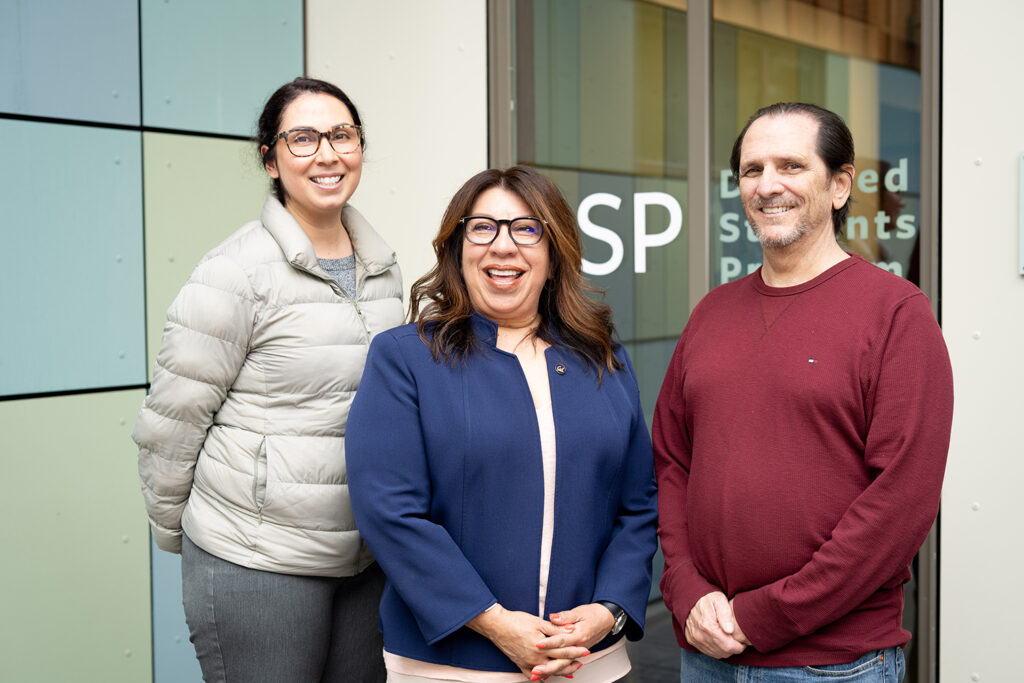
Keegan Houser/UC Berkeley
“The source of funding really speaks to how much our students care about the collective student body and everyone’s unique experiences on campus — and their knowledge that disability can impact a student at any time,” said Martha Velasquez, DSP associate director.
Ryan Manriquez, a graduate student in public policy who is in the DSP, added that the space is “welcoming and accessible and can be experienced by disabled and non-disabled students alike …. It’s a place in the center of campus for students to come together.”
A space to serve ‘incredible growth’
When Velasquez first started her job at Berkeley’s DSP in 2006, there were 500 DSP students. Today, there are about 5,500.
“We’ve seen incredible growth,” she said, adding that the staff currently numbers 41. “And we’d definitely outgrown our space.”
The types of disabilities for which Berkeley students need support also have changed. One reason is an amendment in 2008 to the Americans with Disabilities Act (ADA) of 1990. The ADA Amendments Act broadened the definition of disability to include people with psychiatric disabilities.
As a result, mental health conditions that may qualify as a disability under the ADA include major depression, post-traumatic stress disorder, bipolar disorder, schizophrenia, obsessive-compulsive disorder, panic disorders and personality disorders.
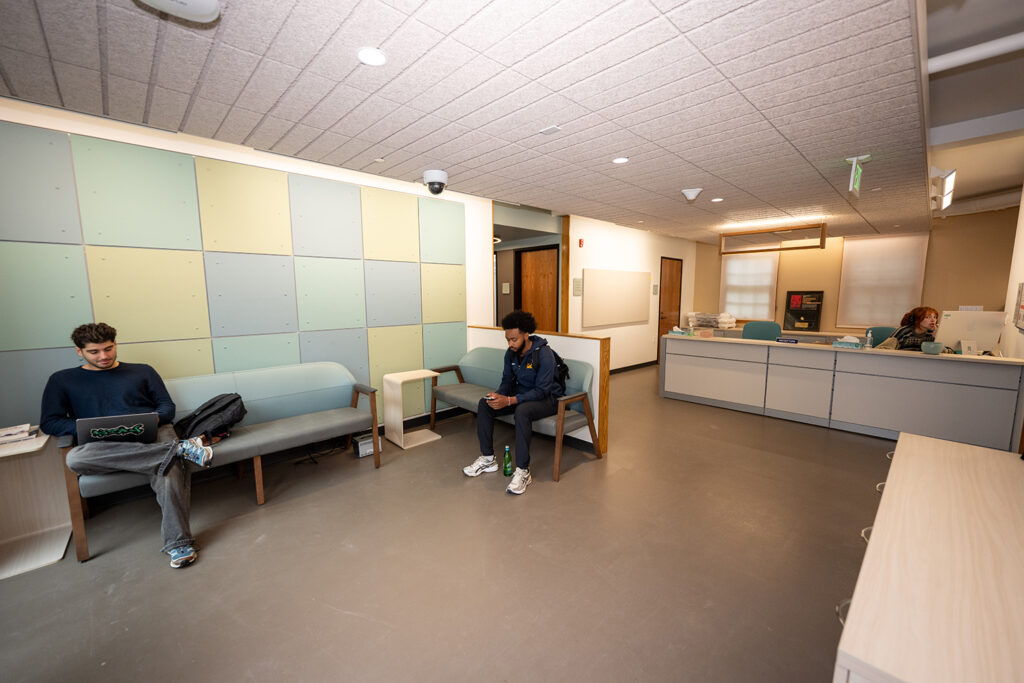
Keegan Houser/UC Berkeley
Varela said that in the last five or more years, the percentage of DSP students with psychological disabilities has increased almost 50% and that about 2,300 DSP students have that diagnosis. In addition to ADA changes, the COVID pandemic adversely affected student mental health nationwide, she said, leading to an increase in major depressive disorder and generalized anxiety disorder.
Also contributing to higher numbers of college students with disabilities is a growing emphasis within K-12 education on preparing students with disabilities for post-secondary learning, including college, by providing support and resources for a successful transition.
“Students today feel more empowered to talk about mental health, too, and there have been many efforts made to destigmatize and normalize the need for mental health services,” added Varela. “Before, it was taboo and mostly frowned upon.”
Varela said the DSP serves 11-12% of the Berkeley undergraduate population and about 8% of graduate students. But she added that since one in four people in the U.S. has a disability, “we aren’t even serving half of the students on campus who would benefit from the DSP.”
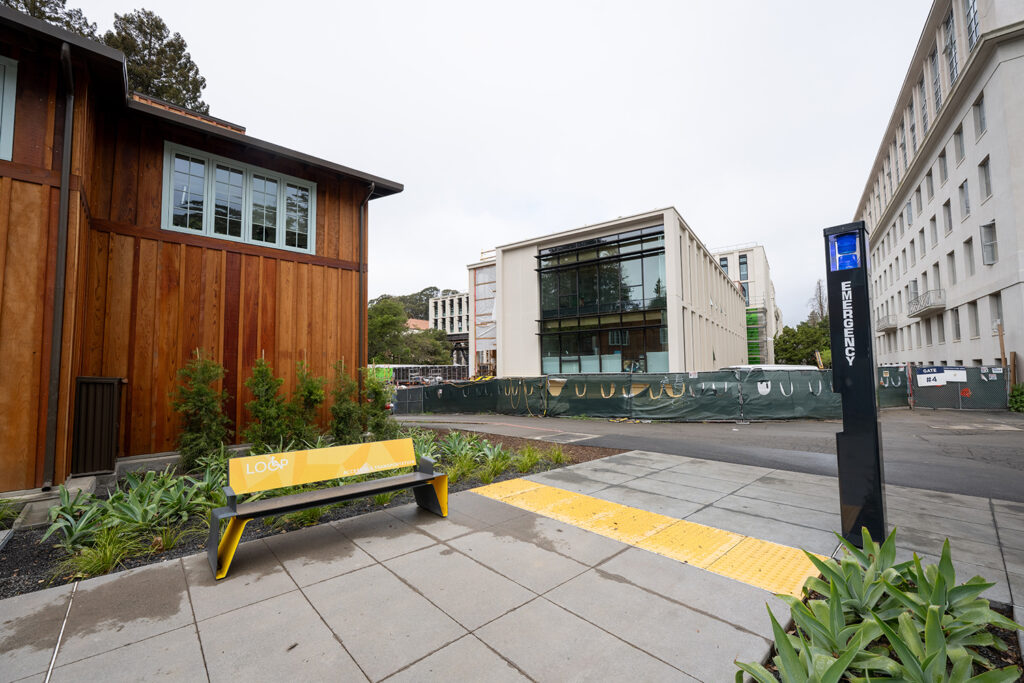
Keegan Houser/UC Berkeley
“A lot of students don’t come to us for a variety of reasons, such as having experienced discrimination, or wanting autonomy, and that’s their prerogative,” she said. “We’re always looking to find those students. We’re at yield events, such as Golden Bear Orientation, and the TRIO program does outreach to students who are first-generation and/or low income.”
Through TRIO, students with disabilities receive enhanced services to support degree completion. Spectrum Connect, another DSP program, offers autistic students support services and opportunities for social and community involvement.
At the Disability Cultural Community Center, students with disabilities gather and give strength to each other. It’s also where they and others from the campus community and beyond work together on ways to advance people with disabilities to fully learn, work, thrive and live with dignity.
“All of these programs provide services that go beyond compliance,” said Varela.
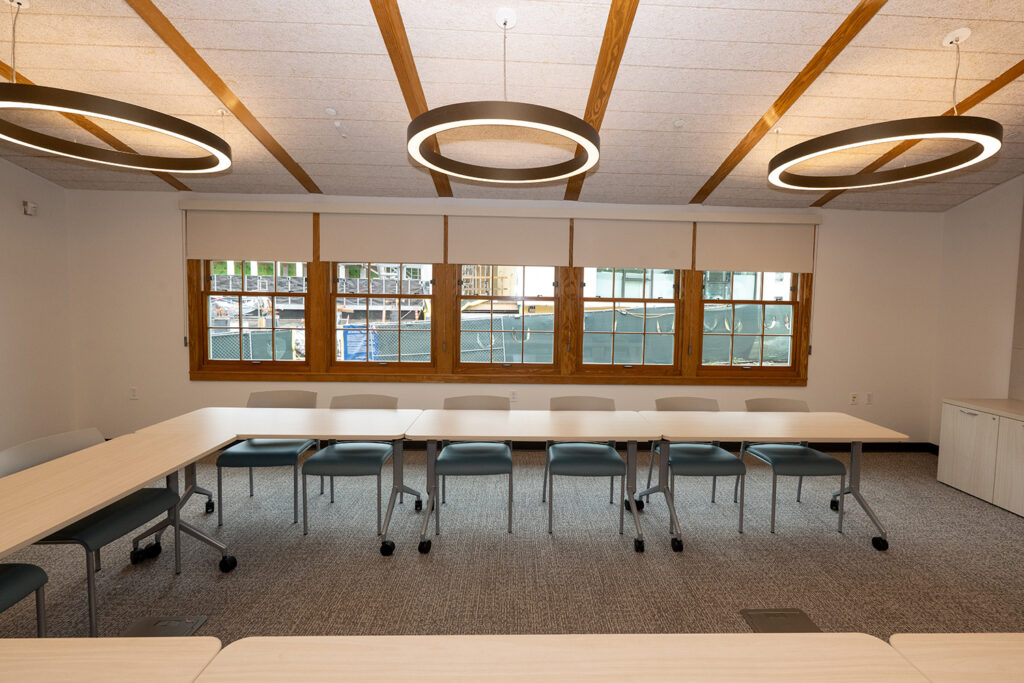
Keegan Houser/UC Berkeley
Architecture that understands disability
Creekside Center’s design addresses the needs of today’s DSP population. For starters, it’s sensory-friendly — a calm and comfortable space for individuals who may be sensitive to noise, light or other environmental factors, said Wendy Hillis, campus architect.
Students with sensory-processing disorders, PTSD and mental health conditions such as anxiety and depression will discover sound-absorbing materials in the building, such as acoustic ceiling tiles, wall panels, carpeting and soft furnishings that help reduce background noise and echoes.
The lighting is a mixture of indirect, dimmable LED lights that minimize harsh glare. The muted colors of the walls and fabrics include blues, greens and grays, for a soothing visual atmosphere.
“The overall goal,” said Hillis, “is to offer a supportive environment that helps reduce sensory overload, promotes mental focus and fosters inclusivity.”
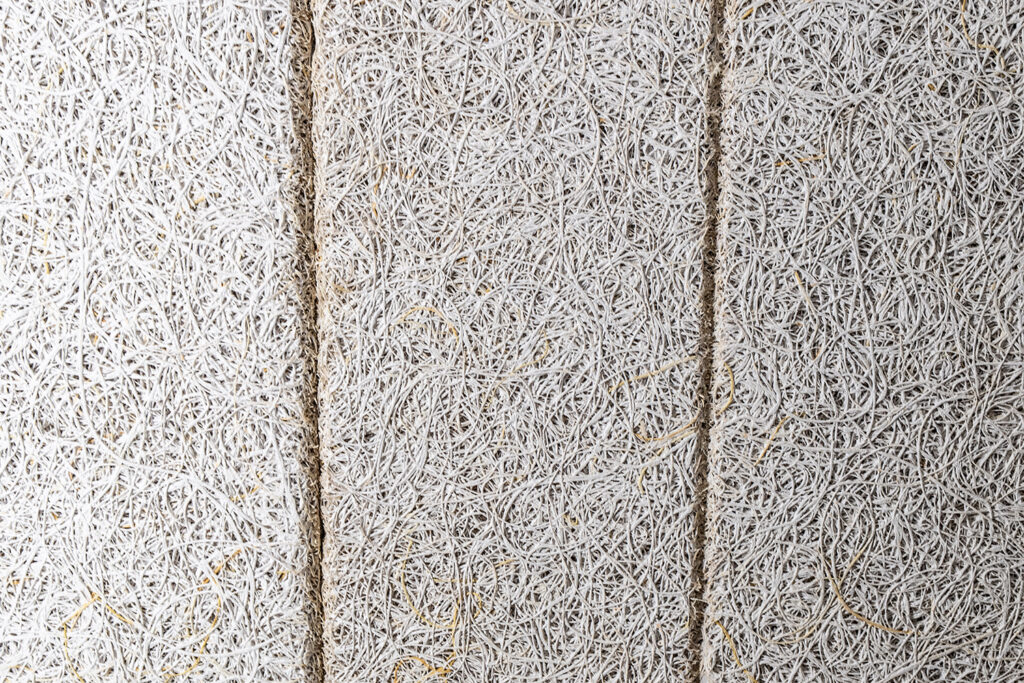
Keegan Houser/UC Berkeley
Hillis said the campus worked with architects who themselves have disabilities, and with DSP staff members and students. The project also aligned with the Division of Equity and Inclusion’s mission of fostering an inclusive campus environment.
“The architects have been amazing in understanding disability,” said Hillis, adding that they also designed the Ed Roberts Campus, a nonprofit corporation in Berkeley that houses the offices of the disability organizations with a common history in the Independent Living Movement that began in the early 1970s.
Also advising the design of Creekside Center was Berkeley alumnus Ben Perez, the campus’s former physical access compliance manager and a wheelchair user.
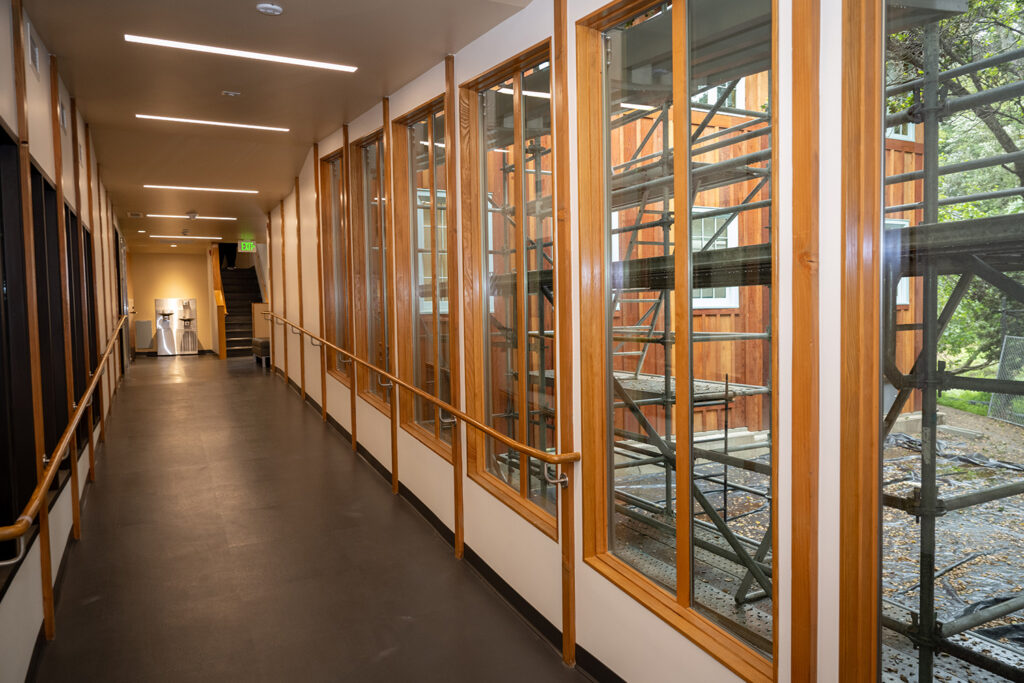
Keegan Houser/UC Berkeley
Creekside Center has ample wheelchair turning radiuses, restrooms with space for attendant care, adjustable tables and intuitive interior circulation design, “which means that the building’s internal pathways — like hallways, stairwells and gathering areas — are laid out to naturally guide occupants through the space without confusion, … without needing excessive signage or instructions,” said Hillis.
Some students with disabilities, she explained, “may feel disoriented in large or complex environments.”
It also offers central air conditioning and heat for the first time in the building’s history. This is especially helpful for students with autonomic disorders, since the autonomic nervous system regulates how the body’s internal organs function, and its disruption can affect heart rate, blood pressure, digestion and body temperature.
Informal lounges and connections to outdoor spaces provide students with areas for relaxation and respite from high-demand environments on campus, further supporting their mental health and overall sense of well-being.
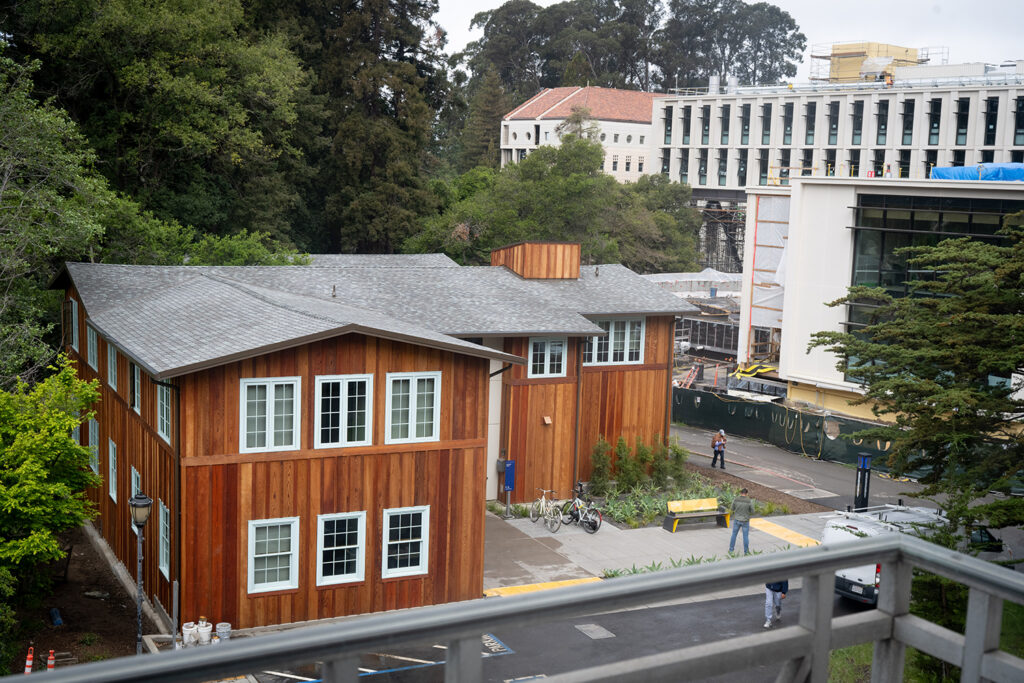
Keegan Houser/UC Berkeley
“When we provide students with the support they need,” said Varela, “we give them the opportunity of equal access — access to knowledge, the highest form of currency on any campus. And students with disabilities are just as smart, just as brilliant, as other students, and they, too, are the best and brightest that Berkeley has to offer.
“But society doesn’t often value people with disabilities and their contributions, which leads to impoverishment, and poverty is generational, along with low rates of educational attainment and employment.”
“We have the ability to effect change,” she added. “Seeing our students get what they need, like Creekside Center, is an amazing and beautiful thing.”
Said Manriquez, who plans to use his master’s degree to contribute to disability rights: “If students have stability in this space, it will translate into student success.”